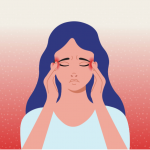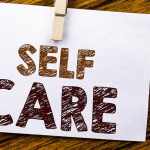A little over 18% of American adults suffer an anxiety disorder. That’s about 40 million people. Anxiety and depression often go hand-in-hand.
If you suffer from anxiety, depression, or both, you’re not alone. Controlling your anxiety level starts with education.
Read on to learn about anxiety and creating a stress-reduction plan.
Table of Contents
Anxiety Disorder
The criteria for anxiety is at least six months of excessive worrying about a job, school, or other events.
There are six key symptoms. If a person has three of them for six months for more days than not, they have a generalized anxiety disorder.
The symptoms are:
- Difficulty with concentration
- Restless or being on an edge
- Fatigue
- Disturbed sleep
- Irritable
- Muscle tension
Another qualifying factor is that the symptoms aren’t from another medical disorder.
Symptoms of Anxiety
Excessive anxiety has adverse health effects. A person suffering from anxiety can have a myriad of physical symptoms.
These are some, but not all the physical symptoms of anxiety:
- Chest pain
- Heart palpitations
- Shortness of breath
- Dizziness
- Tingling and numbness
- Upset stomach
- Feelings of burning skin
- Headaches
- Nausea
- Weakness
- Sleep disturbance
- Hoarding
Anxiety includes a lot of fear, some of it legitimate. But a person with an anxiety disorder is overly worried and fearful about things. Some people manifest anxiety through behaviors such as hoarding. More here.
Good News
But there’s good news. Anxiety disorders are treatable. Some people can treat them on their own, though many people need outside help. It takes good information, help, and support.
Talk therapy with a qualified therapist is a good approach. Others need medication as well.
Circumstantial Anxiety
Most people experience circumstantial anxiety at some point in life. This is when anxiety occurs due to an acute event such as a death. The breakup of a relationship can provoke circumstantial anxiety.
Most people with circumstantial anxiety resolve it on their own or with help from friends and family.
Chronic Anxiety
Chronic anxiety happens for a more extended period of time. It often satisfies the definition of generalized anxiety disorder. There are four types:
- Panic
- Situational (PTSD)
- Anticipatory
- Involuntary
A panic disorder includes spontaneous panic or anxiety attacks. The attacks can occur anywhere at any time.
One of the most common situational anxiety disorders is PTSD. PTSD affects many soldiers due to the traumatic events suffered during the war. But it can affect anyone who’s had a traumatic event.
Anticipatory anxiety is excessive worry about something that might happen. A common example is a person with severe worries about the future of their job.
When a person has sudden, spontaneous panic attacks, this is involuntary anxiety. The anxiety about not knowing when the attacks might happen makes the disorder worse.
Anxiety Level
There are different levels of anxiety disorders:
Early-stage anxiety
Symptoms have started recently, but aren’t too worrisome. Seeking help now is optimal. The symptoms are more easily addressed. A patient doesn’t usually need more than some counseling.
Some patients even recover from this stage using only self-help materials.
Mild Anxiety
The symptoms get worse, but the negative impact is mild. The person is annoyed and distressed, but he’s able to continue his usual activities. Sometimes a person in this stage seeks help from a primary-care doctor.
Treating anxiety at this stage is also effective. Good self-help materials or therapy is usually enough for a full recovery.
Moderate Anxiety
Symptoms are more severe and persistent. They’re having a negative impact on lifestyle. In this stage, a person can force themselves to do most things, but activity is restricted.
At this stage, the patient experiences fear of the condition and what’s happening. Most people in this stage visit the doctor several times hoping for a resolution. Doctors often prescribe medication at this stage.
Medication can mask the underlying problems causing the anxiety. Self-help materials are helpful, but a therapist or personal coach is also important. Someone with experience in the treatment of anxiety gets the best results.
High Anxiety
High anxiety impairs a person’s lifestyle. The symptoms are dramatic and persistent. Most people at this stage are on medication, but continuing with severe symptoms.
Most people in this stage fear the condition and feel out of control. A person experiencing high anxiety won’t get better with self-help treatment alone. Counseling is imperative.
Recovery takes longer at this stage.
Severe High Anxiety
At this stage, symptoms are dramatic, entrenched, and intense. Severe high anxiety causes significant impairment in lifestyle. It’s crucial a person with severe high anxiety seeks help. Help should be from a qualified counselor or therapist.
Get help from someone with experience in treating anxiety. It’s also helpful if your counselor has recovered from an anxiety disorder himself. Having recovered from his own experience, he’ll offer valuable insights into the disorder.
Controlling Your Anxiety
Treatment often consists of therapy and medication. But many people can self-treat in the early stages. It’s also important to live a healthy lifestyle.
There are several things that help a person cope with early-stage or mild anxiety.
Manage Stress
Stress is often due to disorganization. Get organized. Be proactive with school or work deadlines. Make a list of tasks. Tackle a few easy tasks first so the list gets smaller.
Don’t procrastinate with the harder tasks. Get them done early on. This way there’s less ruminating and worrying about them. Managing stress can limit anxiety triggers.
Exercise and Relaxation
Physical exercise improves self-image. It also releases brain chemicals that induce good feelings. Yoga is a great physical workout that also uses meditation and relaxation techniques.
Relaxation techniques include deep breathing exercises and meditation. Learn simple meditation techniques online.
Positive Affirmations
Any thoughts you repeat over and over are affirmations. Many people repeat negative thoughts to themselves all day. Replace the negative thoughts with positive thoughts.
Start your day with a few positive affirmations like: “Today is a great day. I’ll get lots of work done. I’ll feel great.” Repeat positive affirmations to yourself throughout the day.
Personal Support Network
Confide in your personal support network. Talk to a trusted family member or friend about your fears.
Manage Your Anxiety Level
Lowering your anxiety level is important in today’s stressful world. Now that you know the symptoms of anxiety, work on reducing yours.
Get organized and manage your stress. Exercise and live a healthy lifestyle. Work on turning negative thoughts into positive ones. Get a good support network.
Consult a professional if your anxiety is out of control. Looking for more informative health articles? Take a look here.







